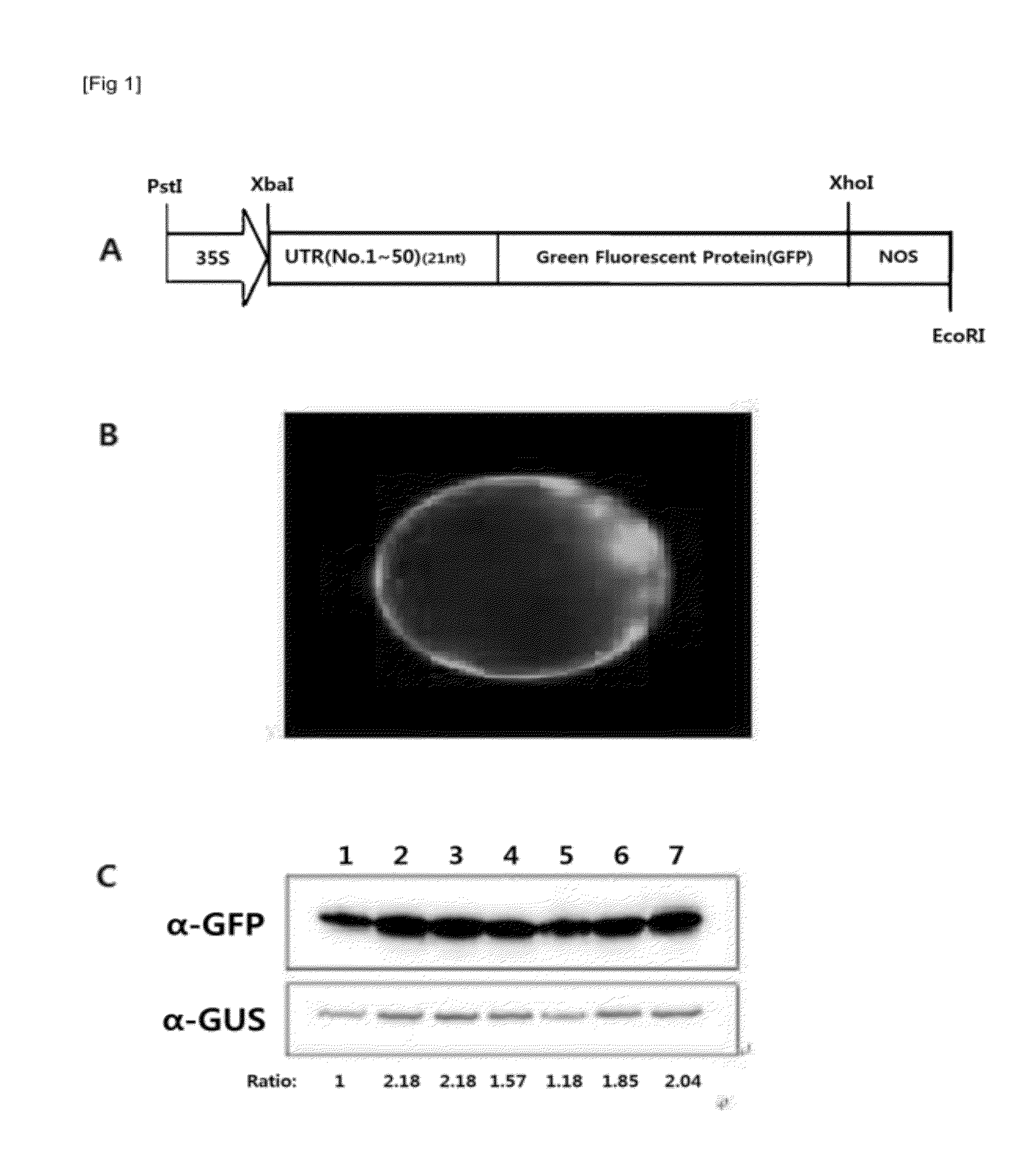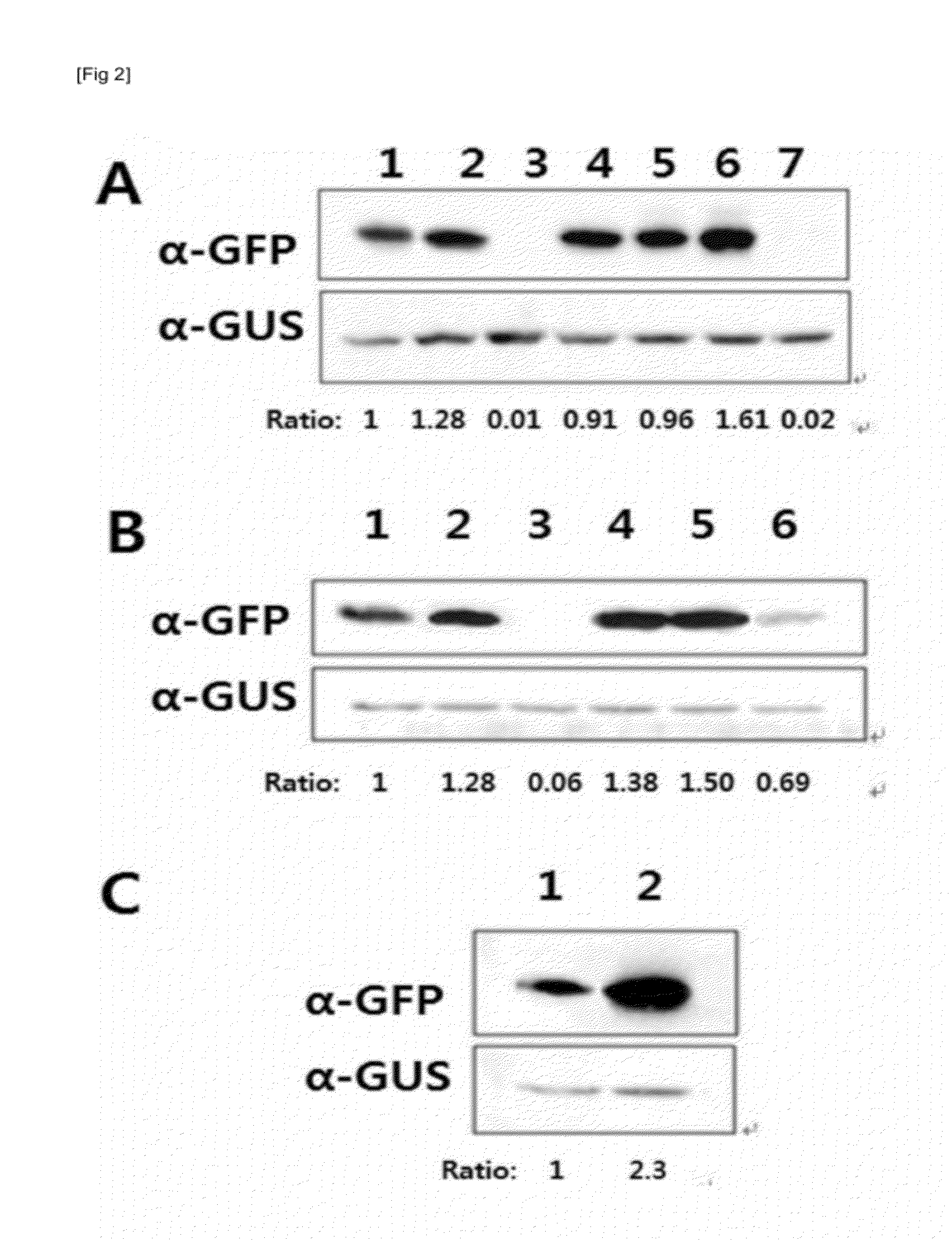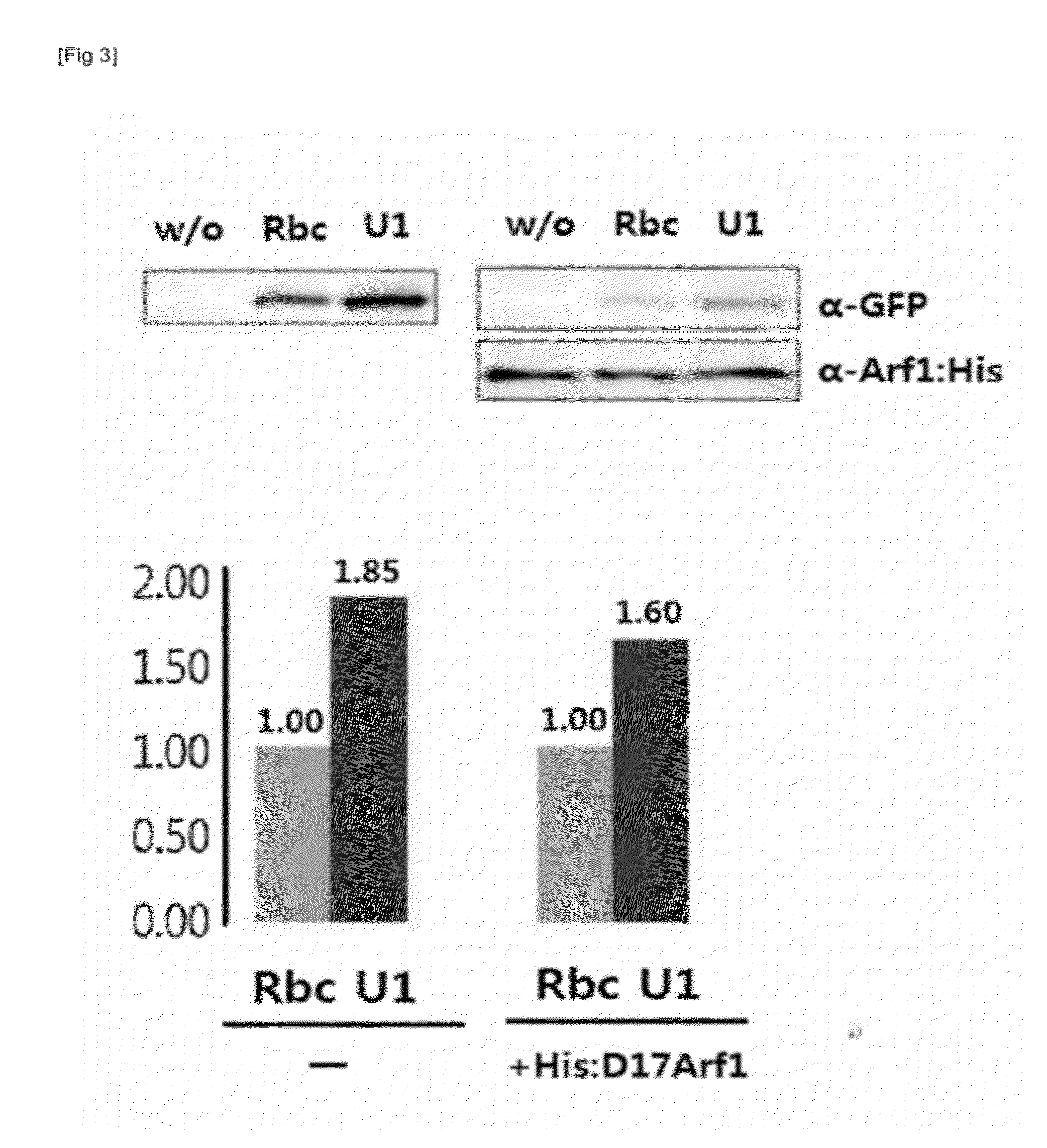DNA fragment for improving translation efficiency, and recombinant vector containing same
a technology of dna fragments and translation efficiency, which is applied in the direction of sugar derivatives, biochemical instruments and processes, organic chemistry, etc., can solve the problems of limited production of useful proteins on a large scale, harmful to the transgenic plant system, and insufficient expression of transgenes, so as to improve the translation efficiency of heterologous proteins and improve the translation efficiency
- Summary
- Abstract
- Description
- Claims
- Application Information
AI Technical Summary
Benefits of technology
Problems solved by technology
Method used
Image
Examples
example 1
Screening of 5′-UTR Sequence
[0077]To improve the expression of the target gene, the present inventors used A. thaliana whole genome to screen the 5′-UTR with high translation efficiency. Sequences of the untranslated regions (UTRs) at the N-terminal regions of genes from A. thaliana whole genome were obtained using BLAST searches. Twenty one nucleotide sequences located in front of the start codon of the coding sequences were selected and then listed. Next, 21 nucleotide sequences from the 5′-UTR of encoding genes of A. thaliana whole genome were compared for sequence homology with the 5′-UTR sequence of Ribulose bisphosphate carboxylase / oxygenase (RUBISCO) small subunit (RbcS) gene, that is known for high translation efficiency. Sequences were selected by comparing the sequence homology with 5′-UTR of RbcS and grading the similarity from high to low.
TABLE 1The 5′-UTR sequences of 50 screened genes.5′-UTRNOs.Nucleotide SequencesGenes1AGAGAAGACGAAACACAAAAGubiquitin extension protein ...
example 2
Selection of 5′UTR with High Translation Efficiency
[0079] Construction of Recombinant Vector to Confirm the Translation Efficiency of 5′-UTR
[0080]To determine the 5′-UTR sequence with the highest translation efficiency in A. thaliana protoplast, 5′-UTR::GFP structure was constructed by using PCR method for each of the 50 5′-UTR sequences screened from the Example 1. In detail, PCR amplification was performed by using plasmid 326-GFP as a template (A. thaliana Biological Resource center, Ohio State University, Ohio, USA). The 21 nucleotide sequences of 5′-UTR selected and the N-terminal region sequence of GFP including start codon AUG was used as a upstream primer. NOS terminator sequence was used as a downstream primer. DNA amplified by PCR was cloned into XcmI-linearized pBluescript. After confirming the 5′-UTR and GFP cloning region by DNA sequencing, DNA encoding 5′-UTR-GFP region was digested with XbaI / XhoI, and then cloned into XhaI / XhoI-linearized 326-GFP3G (326-GFP vector wit...
example 3
Analysis of Translation Efficiency by Base Substitution of 5′UTR
[0084] Analysis of Translation Efficiency of Mutant 5′UTR
[0085]According to the result of Example 2, the present inventors confirmed that of the 50 5′-UTRs screened, 5′-UTR NOs: 1, 2, 6, 7, 24 and 36 showed high translation efficiency. In order to investigate the importance of 5′-UTR base in translation efficiency of 5′-UTR, an experiment was performed to analyze the translation efficiency of the 5′-UTR with base substitution. First, base substitution mutagenesis UTR was generated for 5′-UTR NO. 1 (SEQ ID NO: 1), which was shown to have high translation efficiency. In detail, three bases at the 3′-end of 5′-UTR NO: 1 were substituted with continuous bases of either thymine (T), adenine (A), guanine (G) or cytosine (C). In addition, a plasmid having the last base at the 3′-end of the 5′-UTR of SEQ ID NO: 1 substituted with thymine was constructed.
[0086]Also, mutant sequences whose base at position 4 and position 5 from t...
PUM
| Property | Measurement | Unit |
|---|---|---|
| Mass | aaaaa | aaaaa |
| Efficiency | aaaaa | aaaaa |
Abstract
Description
Claims
Application Information
 Login to View More
Login to View More - R&D
- Intellectual Property
- Life Sciences
- Materials
- Tech Scout
- Unparalleled Data Quality
- Higher Quality Content
- 60% Fewer Hallucinations
Browse by: Latest US Patents, China's latest patents, Technical Efficacy Thesaurus, Application Domain, Technology Topic, Popular Technical Reports.
© 2025 PatSnap. All rights reserved.Legal|Privacy policy|Modern Slavery Act Transparency Statement|Sitemap|About US| Contact US: help@patsnap.com



